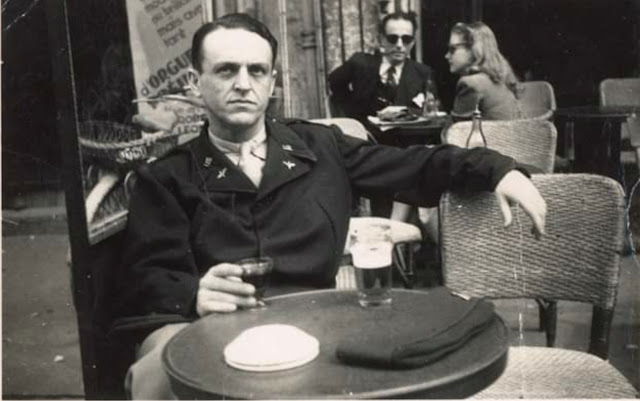"Blazing Saddles" Counters Racism with Shock & Love
The concept of a modern black man trying to make his way in the old West was more than just a cute idea for Mel Brooks. “The engine that drove Blazing Saddles was hatred of the black,” Brooks said. “It was race prejudice. Without that, the movie would not have had nearly the significance, the force, the dynamism, and the stakes that were contained in the film.”
In fact, Mel Brooks envisaged Blazing Saddles as a surrealist epic. He said, “It was time to take two eyes, the way Picasso had done it, and put them on one side of the nose, because the official movie portrait of the West was simply a lie. I figured my career was finished anyway, so I wrote berserk, heartfelt stuff about white corruption and racism and Bible-thumping bigotry.”
Co-screenwriter Andrew Bergman, who came up with the original concept for Blazing Saddles, believes that the film could only have been made at that moment in history. “For a lot of reasons, you couldn’t make this movie today,” he said. “You couldn’t say ‘nigger’ in a movie today, even in a comic way. I mean, Richie Pryor was the last person who could do it in stand-up.” When Blazing Saddles came out in 1974, Pryor was still using the word in his routine, but in 1979, after a trip to Africa, Pryor swore he would never say it onstage again.
When future producer Brian Grazer saw Blazing Saddles in the theater as a young man, it changed the course of his life. Grazer quit law school and started hounding Mel Brooks for career advice, which eventually led to his producing Night Shift and many other films. “It was the birth of a certain type of comedy that I call shock comedy,” said Grazer. “The comedies that preceded it were more gentle and earnest. This one was aggressive and in-your-face, and it was dealing in a very smart and startling way with the most intense social issues, from racial bigotry to sexuality. It was really shocking, and it did everything to wow you or stir you up or mix you up, to take you off balance, every single moment. It subverted all your expectations.”
“This movie was made in a kind of singular moment where it was somehow all right to have this kind of racial language in a movie,” Grazer said. “The secret is that somehow, in the spirit of this movie, there is an affection for the characters. You can tell that Cleavon is just playing with these guys. That’s what makes it work. They call him racial names, but you can tell that he’s so much smarter than they are, so much hipper. You’re seduced into being on his side. He’s so beautiful and elegant compared to the stupid people around him. Even though the situation puts Little in the position of a victim, Brooks gives him power and nobility that the white characters don’t have, so you know that you don’t have to feel sorry for him. Even though on the surface he’s being degraded, you know that he’s going to prevail.”
Mel Brooks believed that the secret ingredient of Blazing Saddles was love. “As long as our hearts were in the right place, and as long as we loved our main character – a black sheriff coping with racial prejudice – and continued to care about his feelings, we could say or do anything we damn well pleased.”
Nonetheless, it was difficult for some of the cast members to utter the hateful language as scripted. Cowboy sidekick Burton Gilliam recalled, “I was having a lot of problems calling people what I was having to call them in the movie. Cleavon was great. When we were doing the scene out there on the desert, he said, ‘If I thought you would say those words to me in any other situation, you know, we’d probably go to fist city. But somebody wrote these words. This is all fun. You say anything you wanna say, and if you wanna say it differently and even add stuff to it, go right ahead, and Mel will go along with that.’”
 |
| Cleavon Little and Mel Brooks on the set of Blazing Saddles |
Cleavon Little understood that Blazing Saddles, wild and shocking as it was, nonetheless had a loftier purpose than mere entertainment. “Comedy is a very spiritual thing,” Little believed. “When people laugh – or cry even – they touch the part of themselves that is most human.”
Mel Brooks explained that in his films, “clichés are just the ornaments. The tree has to be solid. The movie has got to be about something. Blazing Saddles was about whether a black could survive in the good old West. It may seem like a silly picture, but to me, it had a strong underpinning, because it was really about love. But most audiences only remember the ornaments of comedy – the jokes. They don’t see the tree. But what would all the ornaments be without the tree for support? Just a pile of shiny baubles on the ground.”
Sources:
Robert Blair Kaiser, “This Doctor Might Become a Patient,” TV Guide, 4/26/73
Chris Chase, “At the Movies,” New York Times, 7/10/81
Nick Smurthwaite & Paul Gelder, Mel Brooks & the Spoof Movie, 1982
Blazing Saddles DVD: “Back In the Saddle” Featurette
Rick Lyman, “Watching Movies With: Brian Grazer – Inducing Hilarity By Doses
of Shock,” New York Times, 12/14/01
Marlo Thomas, The Right Words at the Right Time, 2002
James Robert Parish, It’s Good To Be the King, 2007





Comments